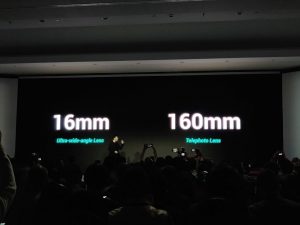At their innovation event in Barcelona today OPPO have revealed their 10x lossless optical zoom in a device. After announcing it earlier this year in Beijing they today showed it off inside a device for the first time.
The 10x lossless zoom, in the current example, uses a triple lens camera consisting of a 48MP main camera, a telephoto lens and an ultra-wide angle lens. To minimise the blurriness of images at full optical zoom OPPO have included OIS on both the main camera and the telephoto lens. The end result of the periscope module is an optical zoom from 16mm to 160mmm.
The new technology uses a periscope type module with multiple lenses and a larger sensor than normal to create images without making the entire camera module excessively large. The 10x lossless zoom periscope camera module has been made relatively small, at 6.76mm thick, making it approximately the same thickness as the R17 Pro camera module. We wondered if they could get the module small enough to fit inside a modern smartphone, and it seems they have.
Michael Tran, Managing Director at OPPO Australia, in commenting on the 10x lossless zoom said that:
With 10x lossless zoom, our mission was to develop a camera technology that would bring customers closer and let them capture content in a way that no other smartphone manufacturer has to date. We believe we’ve achieved that.
The results of the lossless zoom speak for themselves with the following being captured by me at the event, rather than a professional photographer hired by OPPO marketing:
The new camera module is ready for mass production and is expected to arrive in Q2 of this year. As such expect to see it in the R19 Pro and the next Find X phone (rumoured to be called the Find Z), both most likely making their way Downunder at some stage.
Of course this is not the end result of camera hardware for OPPO with R&D ongoing. At this stage it will be in their higher end phones and unless something better arrives in the meantime logic says that it will filter down to the lower end OPPO phones in the future.










